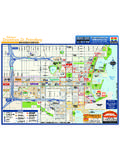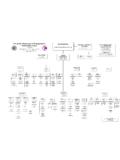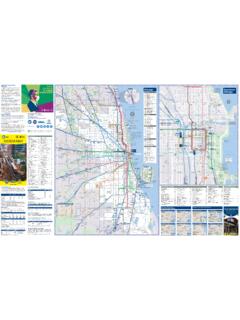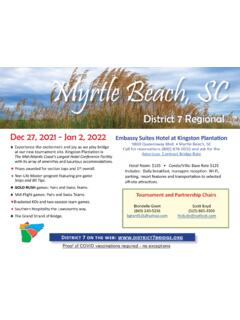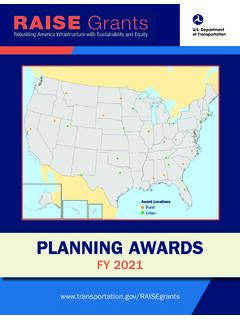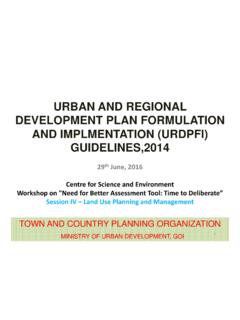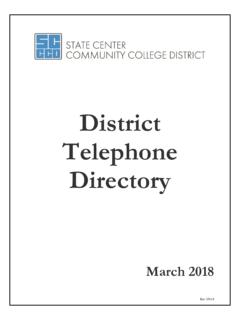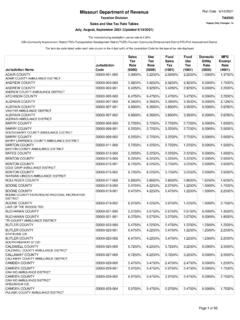Transcription of Lesson 5: Regional Planning - SWMPC
1 5-1 Regional PlanningLesson 55-2 Describe how long-range transportation plans can be coordinatedwith local & Regional land use goals and objectives Identify rolesthat MPOs and other Regional & state agencies can take in creating coordinated Regional transportation & land use plans Describe how to structure a processfor creating a Regional plan Identify effective tools to implementregional transportation & land use plans Learning Outcomes5-5 Planning & Visioning Overview Where Are We Now? Where Are We Going? Where Do We Want to Be? How Will We Get There? Lesson 5: Regional Planning5-6 What is Regional Planning ? Planning for the efficient placement of land use activities, infrastructure and growth across a significantly larger area of land than an individual city or town.
2 A multi-jurisdictional geographic area, such as a metropolitan area or a group of rural counties An area with common economic, environmental or other conditions5-7 Regional Planning Agencies Quasi-Governmental Organizations Councils of Government (COG) Metropolitan Planning Organizations (MPO) Regional Planning Councils/ Regional Commissions5-8 Regional Planning AgencyResponsibilities Assemble/analyze Regional conditions and trends Foster Regional cooperation/partnerships Provide technical assistance to member communities Establish Regional vision/goals/policies Provide clearing house for state/federal funds5-9 How it All Fits TogetherLong-Range transportation PlanCorridor and Area PlansFunctional PlansProject ProgrammingProject DevelopmentProject ImplementationLand UseTransportationRegional VisioningLocal Comprehensive PlanDevelopment Review and PermittingArea/Neighborhood PlansZoning/Development Regulations and GuidelinesProject ImplementationPublic
3 Facility Plans5-11 Planning & Visioning Overview Where Are We Now? Where Are We Going? Where Do We Want to Be? How Will We Get There? Lesson 5: Regional Planning5-12 Where Are We Now? Community background and important features Strengths and weaknesses Current issues and concerns Articulating shared community values5-13 Identify Values, Goals, MeasuresValueThe community is an affordable place to liveGoalProvide a mix of housing that is affordable to all income levelsMeasurePercent of new units constructed annually that are affordable ObjectiveIncrease stock of housing defined as affordable by 20 percent5-16 Vision = Concise statement of values (how the region should be in the future) In 2030, the Denver metropolitan area will be a dynamic region of almost four million people extending across 750 square miles.
4 The overall development pattern will be relatively compact, with a clear distinction on the perimeter between urban and non-urban uses. Within the urban area, there will be diverse development types and housing Denver Regional Council of GovernmentsVision Statement5-17 Goals = A short list of where we want to be as a community Enhance air quality Increase mobility and transportation choices Preserve critical lands, including agricultural, sensitive and strategic open lands Conserve and maintain availability of water resources Provide housing opportunities for a range of family and income types Maximize efficiency in public and infrastructure investments to promote other goalsEnvision UtahEstablish Goals5-18 Performance measures = Specific measures of how well we are doing Accessibility.
5 How much time does travel take? Congestion:What is the level of exposure to traffic congestion? Flexibility:Can the system respond to unexpected conditions? Safety:What are the safety costs associated with transportation ? Land Use:How does the transportation system affect land use?Capital District transportation Commission, Albany, NYEstablish Performance Measures5-19 Planning & Visioning Overview Where Are We Now? Where Are We Going? Where Do We Want to Be? How Will We Get There? Lesson 5: Regional Planning5-20 Regional growth totals Location/distribution of growth Socioeconomic and demographic characteristics Employment industry mix Demand for housing by type Others?
6 Evaluate Trends5-23 Planning & Visioning Overview Where Are We Now? Where Are We Going? Where Do We Want to Be? How Will We Get There? Lesson 5: Regional Planning5-25 Growth patterns transportation systems Natural resources (protected areas)Source: Puget Sound Regional CouncilContinue as plannedFocus growth in bigger citiesFocus growth in smaller cities and townsCreate Scenarios (Alternative Futures)5-27 Source: Sacramento Area Council of GovernmentsAnalyze Scenarios5-28 Blueprint IndicatorsSource: Sacramento Area Council of Governments5-30 How Would Life in 2050 be Differentwith Each Scenario? The typical resident living in a version of a future typical of the Base Case Scenario in 2050 would probably live in a house on a fairly large lot in a subdivision with houses that look a lot like theirs.
7 They would travel to work longer distances than are typical Typical residents living in a future typical of the Preferred Blueprint Scenarioin 2050 would probably live in a house on a smaller lot, in a neighborhood with some larger houses and some attached row houses, apartments and condominiums. They would drive to work, but the trip would be shorter than today, and the time needed to get there would be about the same as 5-31 Case StudyUS 422 Regional Corridor PlanBerks, Chester & Montgomery Counties, Pennsylvania5-32 Regional LocationCase Study5-33 Since 1985, when the expressway was completed from King of Prussia to Pottstown, the corridor has experienced rapid growthIncreasing CongestionCase Study5-34 Compile Inventory & Trends (Where are we now?)
8 Assess Future Conditions (Where are we going?) Develop Alternative Futures/Scenarios (Where do we want to go?) Develop Plan and Implementation Strategies (How do we get there?)Four-Part Study ApproachCase Study5-42 Inventory and Trends:AssetsRailroad track Established downtown Concentrated historic resourcesMulti-use trails Available roadway capacity Water & sewer service5-43 Inventory and Trends: ConstraintsLack of rail service Low-density single use Traffic CongestionHigh crash concentration Nuclear power plant Single use (employment)5-44 Inventory and Trends: OpportunitiesExtend commuter rail Revitalize downtown Proposed station locationProposed park & ride Make complete street Prepare Master Plan5-46 Assess Future Conditions.
9 Population Employment transportation demand Traffic performance measuresFuture Conditions/ScenariosFuture ConditionsSource: the clues to the future in: Municipal comprehensive plans Redevelopment plans and economic development plans Availability of infrastructure (sewer, water, etc.) Visioning workshops/ design charrettes Discussions with municipal officials and the publicFuture Conditions/Scenarios:5-48 Future Conditions/Scenarios:Trend Scenario Land Use5-49 Visioning Alternatives: Sustainable Scenario Land Use5-50 Future Conditions/Scenarios:Trend Scenario Transportation5-51 Visioning Alternatives: Sustainable Scenario Transportation5-54 Revitalized Older DowntownsNew Transit/ExtensionsMixed-Use DevelopmentTransit-Oriented Development (TOD)Bus Rapid Transit (BRT)Park-and-Ride LotsRoadway andInterchange Capacity/Congestion ManagementComplete StreetsFarmland/Open Space PreservationRiver Access**Recommended StrategiesImplementation5-56 Regional Planning .
10 Key Points State and Regional agencies caninfluence land use to support transportation objectives Regional vision establishes the framework for coordinating transportation and land use Inclusive process is important, to establish consensus and buy-in Specific tools and further actions are required to implement the plan5-57 Planning & Visioning Overview Where Are We Now? Where Are We Going? Where Do We Want to Be? How Will We Get There? Lesson 5: Regional Planning5-59 Implementation TechniqueState or Regional AgencyLocal JurisdictionLocal land use planningXTransportation plans, programs, projectsXXEducation and outreachXXTechnical assistanceXXFinancial incentives XXDemonstration projectsXXState regulatory and permitting processesXImplementation structure and fundingXImplementation Techniques5-60 transportation Plans,Programs and Projects Long-range plan goals, objectives, policies, and projects TIP project selection criteria Funding priorities Specific funded programs Project development and design policies and practices5-61 Plan to Implement.
